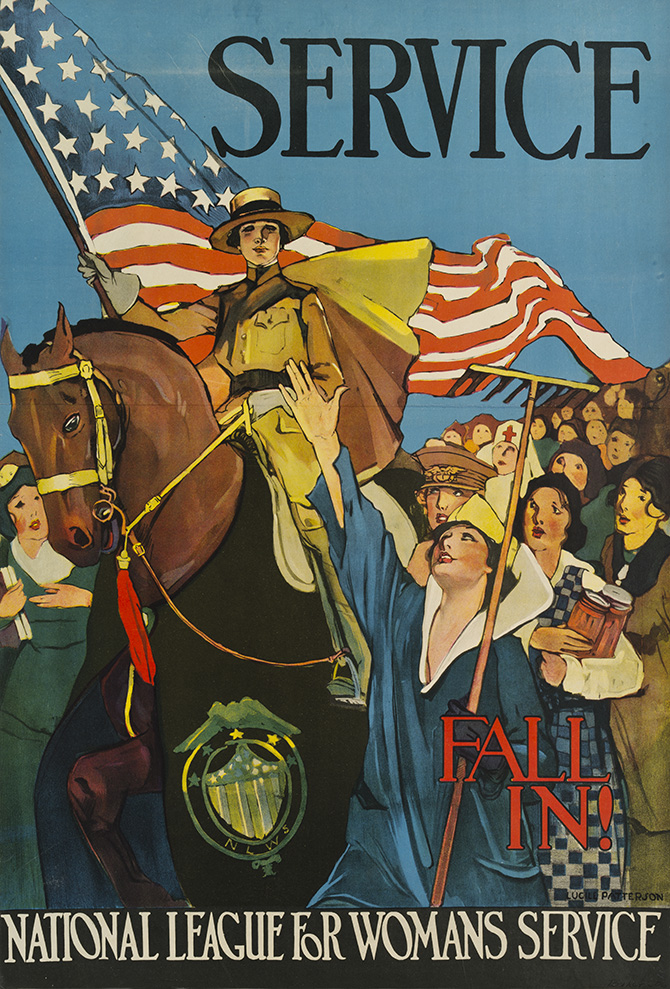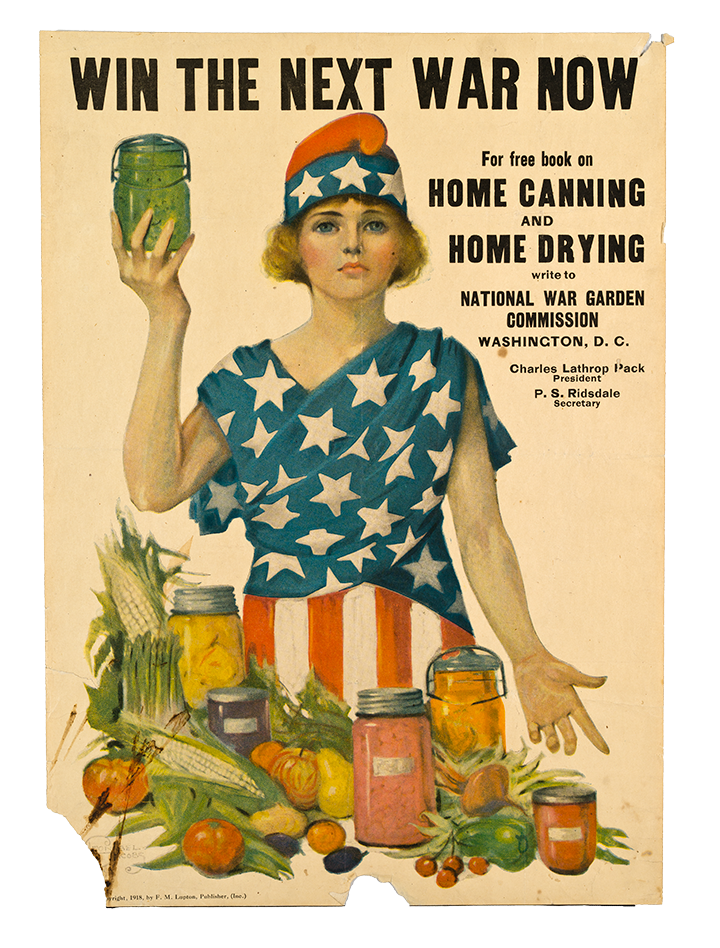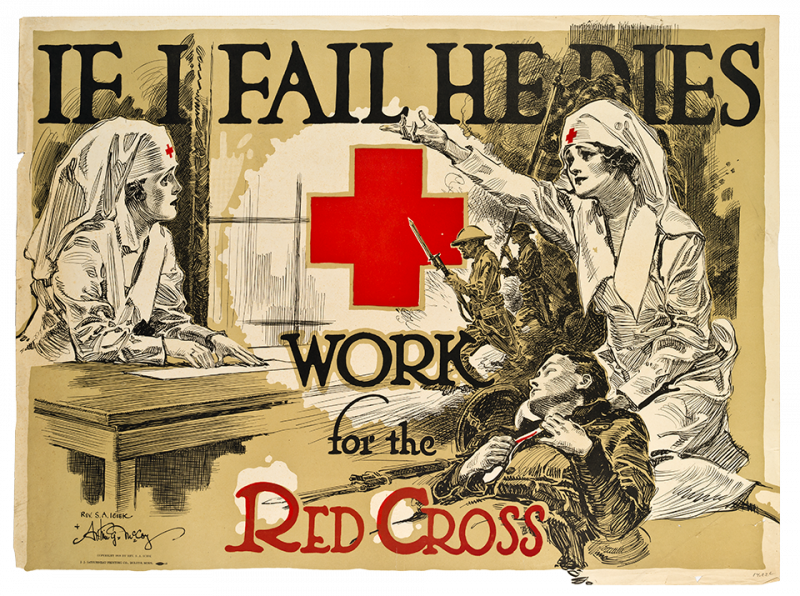Home / Modernizing America, 1889-1920 / Modern Womanhood / Recruiting Women to the War Effort
Resource
Recruiting Women to the War Effort
Three colorful World War I propaganda posters that represent the different types of war work available to women and present a stereotypical view of the young beautiful war worker.
- About
-
Curriculum
- Introduction
-
Units
- 1492–1734Early Encounters
- 1692-1783Settler Colonialism and the Revolution
- 1783-1828Building a New Nation
- 1828-1869Expansions and Inequalities
- 1832-1877A Nation Divided
- 1866-1898Industry and Empire
- 1889-1920Modernizing America
- 1920–1948Confidence and Crises
- 1948-1977Growth and Turmoil
- 1977-2001End of the Twentieth Century
- Discover
-
Search
Background
Women contributed to World War I in numerous critical ways. At home, canning food, conserving materials, and producing clothing and bandages for soldiers became part of daily life. Outside the home, both paid and voluntary work was widely available. Volunteers sent care packages overseas, raised money, and organized home efforts. Paid workers toiled in factories, farms, and offices—often replacing men who went to the front. Although women war workers earned less than their male counterparts, some women earned more than they had before the war. Thousands of women joined the military and auxiliary organizations like the Red Cross or YMCA as nurses, clerical workers, cooks, and drivers and traveled to the French warfront. Unfortunately, opportunity for paid work and military involvement was temporary. After the war, the number of women working for pay declined and Congress banned women from military service.
About the Artifacts
All three images are posters produced by national organizations seeking to recruit women to the war effort. All three embrace a stereotypical view of women war workers as young, strong, beautiful, and white.
- Image 1 – The National League for Women’s Service was an umbrella organization that coordinated war workers across sectors. Nursing, farming, military service, and home canning are all represented.
- Image 2 – The National War Garden Commission encouraged Americans to plant gardens that would provide food for their family, freeing up commercially grown food for the military.
- Image 3 – The Red Cross was the primary provider of nurses to the front. In addition to treating injured soldiers, nurses cooked, cleaned, managed mail, and completed other duties in the soldiers’ camps.
Vocabulary
- auxiliary: Supplemental.
- canning: Preserving food in cans or jars.
- stereotype: An oversimplified and often offensive assumption or description of a person or group of people.
- umbrella organization: A large organization that coordinates many smaller organizations.
- warfront: The place where the fighting takes place. Also known as a battle line.
Discussion Questions
- What stereotypes about women—specifically war workers—do these posters present? What does this say about the target audience for these posters? How might the posters have been received by different groups of women across the country?
- What types of work are represented across all three posters? What does this say about the breadth of war work and the various ways women were asked to contribute?
- Both “Service: Fall In!” and “Win the Next War Now” refer to growing and canning food. Why were food production and conservation so important to the war effort? And why might women have been the primary target of food-related efforts?
Suggested Activities
- Conduct a close analysis of all three posters, asking students to compare and contrast how each presents women war workers and the type of work in which they engaged. What message does each send to the viewer?
- Compare “If I Fail He Dies” with the account of Addie Hunton and Kathryn Johnson in Two Colored Women in the American Expeditionary Forces. Consider how each source presents a different view of work at the front.
- Consider the relationship between women and World War I more broadly by looking at women who both advocated for and against American involvement in the war. Combine this resource with the account by social workers Addie Hunton and Kathryn Johnson and the life stories of pacifists Jeannette Rankin and Emma Goldman.
- Explore how painters, illustrators, and commercial artists during WWI used propaganda posters to target women as essential war-time contributors on the home front. Students will consider the principles of graphic design through the creation of a WWI propaganda poster and study how artists of the time used these elements to depict the wartime roles of women.
Themes
POWER AND POLITICS; ACTIVISM AND SOCIAL CHANGE









